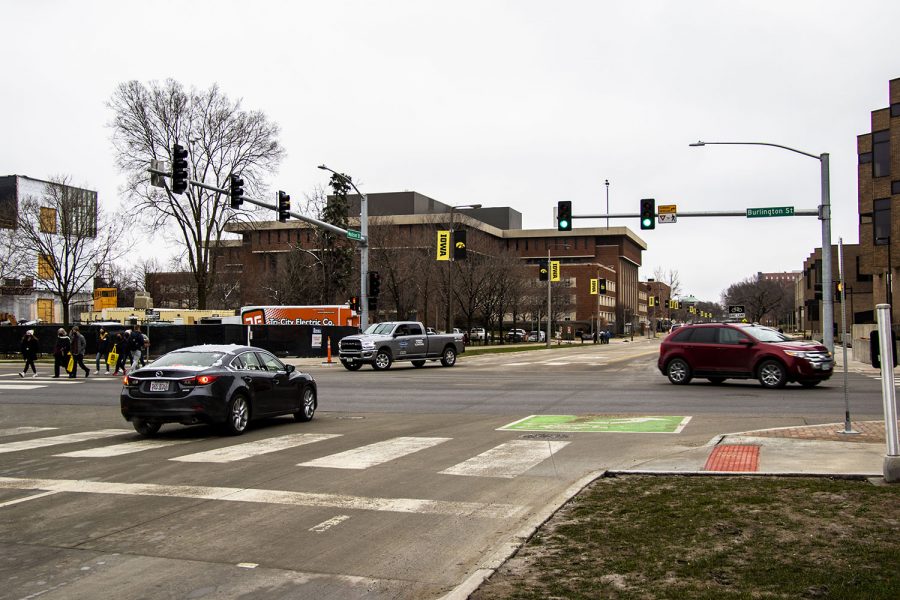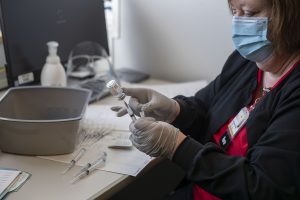Iowa City leaders see adding traffic cameras as step towards equity
Iowa City officials hope to design a walkable and more equitable city in the coming years, using traffic cameras as a first step.
Intersection of E. Burlington St. and S. Madison St. on Tuesday, March 16, 2021.
March 17, 2021
As part of a mission to change the experience of city living, some leaders in Iowa City are considering using traffic cameras to reduce the number of direct police-civilian interactions.
The traffic camera initiative is part of a wider long-term effort to make life more equitable and convenient for all residents within the Iowa City area.
Iowa City City Councilor John Thomas said that traditional police traffic stops are specifically unpleasant for everyone. Such interactions can be more problematic and stressful for people with certain mental disorders, including autism.
“Traffic stops can cause strong feelings, ranging from emotional distress to feeling like your life is threatened,” Thomas said.
At previous council meetings, Thomas has suggested using traffic cameras to address racial inequities in policing, suggesting lowering police interactions with the public will reduce instances of racial profiling.
According to a study done by Stanford University, Black drivers are pulled over at a higher rate than white drivers, and Black and Latinx drivers are searched more often than white drivers.
City Councilor Laura Bergus said that these concerns are what drove the initial idea to install more traffic cameras across the city. The goal is to reduce interactions between police and drivers during traditional traffic stops.
“Traffic cameras are not making pretextual stops,” Bergus said. “The goal is not about issuing a ticket but reducing dangerous behaviors.”
While the city sees the installation of traffic cameras as a way to address injustices within policing, a new bill in the Iowa Legislature that would ban traffic cameras from being used around the state may prevent the plan from being put into place.
However, Bergus said that traffic cameras are one small element of large-scale changes that the city would like to make to enhance residents’ living experiences.
“There is a bigger-picture way to approach this issue,” Bergus said.
Thomas said that although policing concerns were the immediate cause for revisiting traffic regulation methods, there are many other layers of inequity related to traffic and city infrastructure. Some of these inequities include the disparity in access to automobiles.
Thomas said these issues are motivating city officials to create a walkable city, which is less reliant on automobiles and more accessible through other modes of transportation.
“I’ve come to feel like we have a caste system in some respects when it comes to our transportation system,” Thomas said. “People with the automobiles, especially a person like a white man living in the suburbs are at the top of the caste, and we do everything possible to accommodate this person. That leaves those who walk kind of marginalized.”
The issue is compounded by the fact that Iowa City has many student residents that are reliant on walking as a form of transportation, Thomas said.
“We can basically return to a three-car model – where there’s a better balance between walking/biking, taking public transit, and driving.”
Associate Transportation Planner for Iowa City Sarah Walz said that new street designs in the city are also shorter, which will make newer neighborhoods in Iowa City more easily interconnected.
“At a commercial corner you might have anything from convenience stores to a coffee shop and maybe some other services that people can reach by foot,” Walz said.
Walz added that it is hard to redesign streets that have already been built. Therefore, it is important for locals to remain patient as the city is reimagined.
“It’s very hard to go back in once things are built and make it more connected,” Walz said. “It will take time.”






